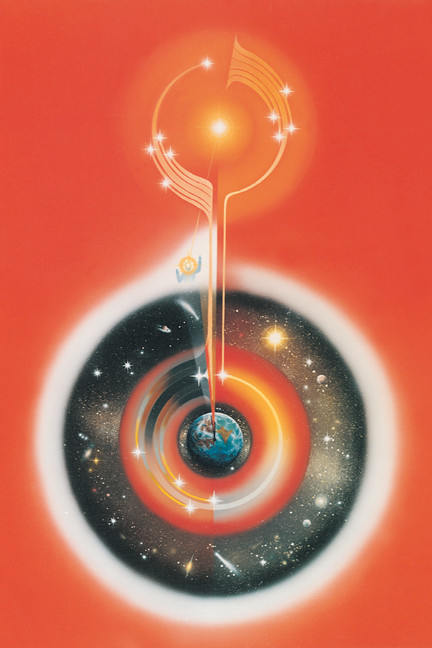Travellers to different countries are familiar with the ‘samsara' – the wheel of life – depicted in textiles, pottery art, and folklore. The idea appears frequently in religious and philosophical texts of both India and ancient Greece in the middle of the first millennium B.C.E. Although the concept is firmly rooted in many of the older cultures, it is less prevalent in the contemporary, ‘Western' understanding of time.
 This ancient concept implies that all species reincarnate or move from one body to another to enjoy lifetime after lifetime. There are countless versions of how this ‘re-cycling' takes place and some schools of thought suggest we move between and across species, while others, such as Brahma Kumaris, understand that we take birth only within our own kind. That is, humans will always be humans and elephants will always be elephants, and so on.
This ancient concept implies that all species reincarnate or move from one body to another to enjoy lifetime after lifetime. There are countless versions of how this ‘re-cycling' takes place and some schools of thought suggest we move between and across species, while others, such as Brahma Kumaris, understand that we take birth only within our own kind. That is, humans will always be humans and elephants will always be elephants, and so on.
Across all cultures, it is widely understood that the experience of suffering and misery is a product of our own actions (karma), as are the beneficial states of joy, love and contentment. The choice is ours; the repercussions self-created.
Traditionally, the time wheel rotates through four eras, which typify the changing conscious state (of human beings in particular) at that point in time. As such, there is no beginning or end, just a perpetual link of action and reaction, the quality of which is in our hands (or, rather, our heads).
With the changing of seasons and the integrity of matter, the external form of the earth changes over time. The driving force behind this devolution is the human mind. The higher, pure consciousness manifests in a robust, verdant planet, while the lowest, impure consciousness produces a polluted, corroded state of existence.
When people live their daily life in the awareness of this time cycle, they keep the ‘big picture' in mind constantly, and stay attuned to the impact of their thoughts and actions on the course of time, and their personal quality of life. Standing at the mountain summit in this way, not only do they enjoy the panoramic view of life and stay wise as to when and how to move forward, but they also develop a deep respect for the variety in life and the right of anyone to act as and when they wish. The wisdom of ahimsa (non-violence) brings forth great detachment and compassion for the spiritual dignity of each one. Each one is the maker of his or her own destiny, and will move through all four ages over time before the return journey to the home of the soul.
Just as we say, "History repeats," so the time cycle repeats. That is a deep and detailed discussion in itself and you can explore the subject in the Raja Yoga meditation foundation course at your local meditation centre.

